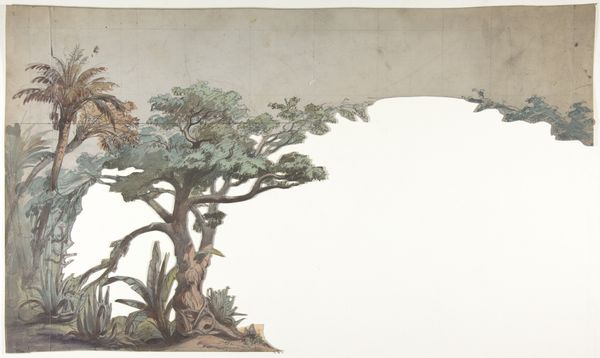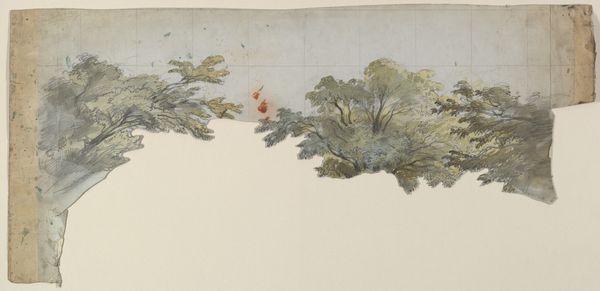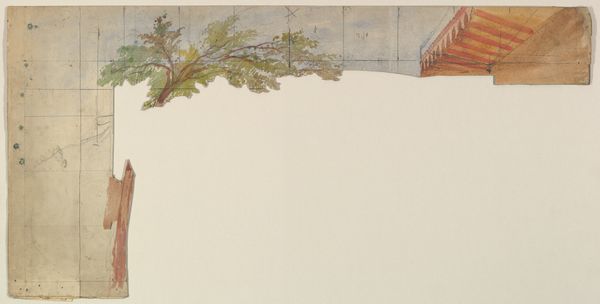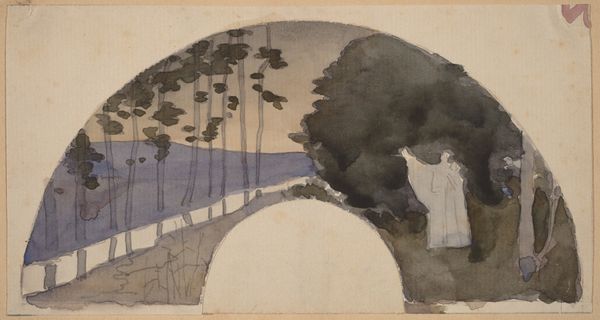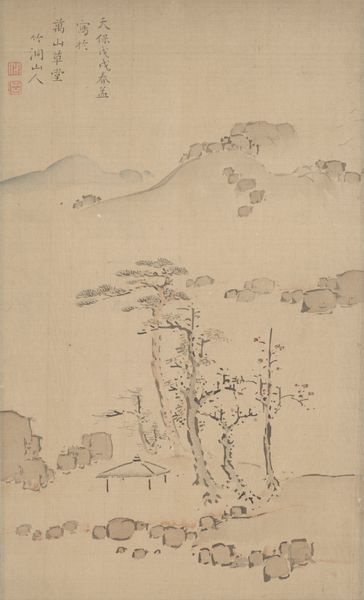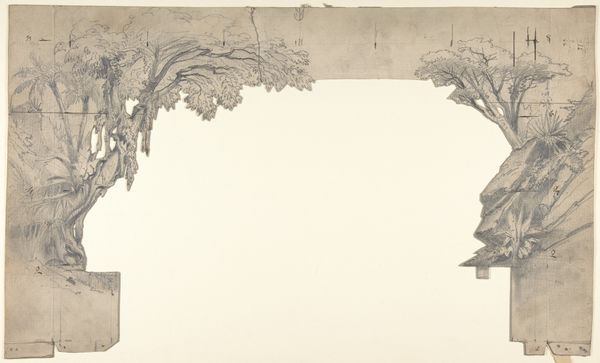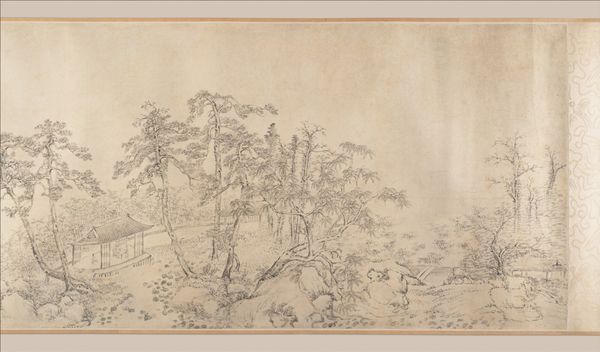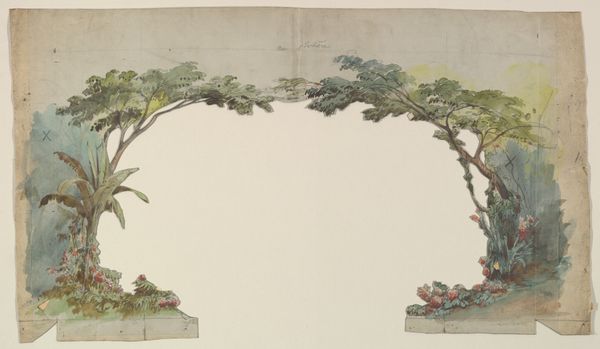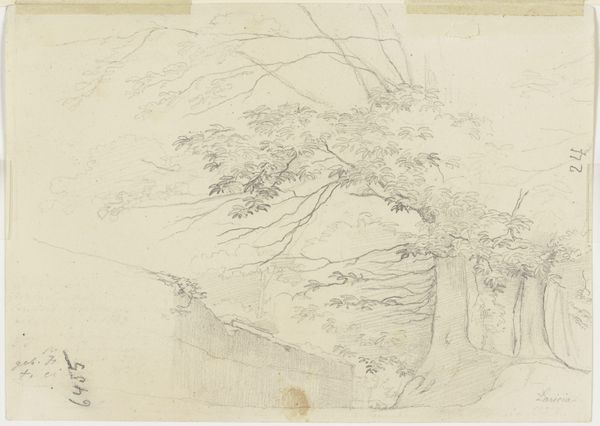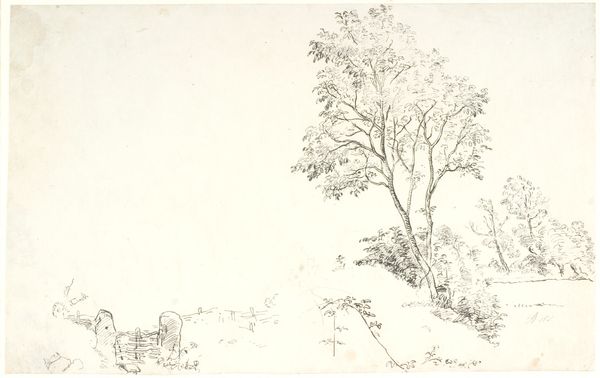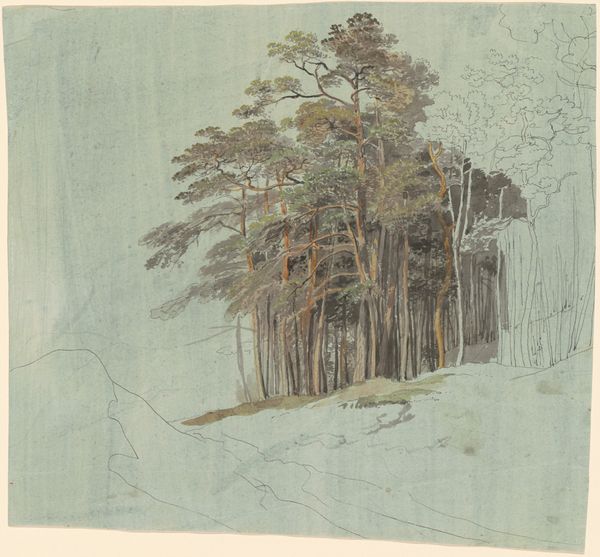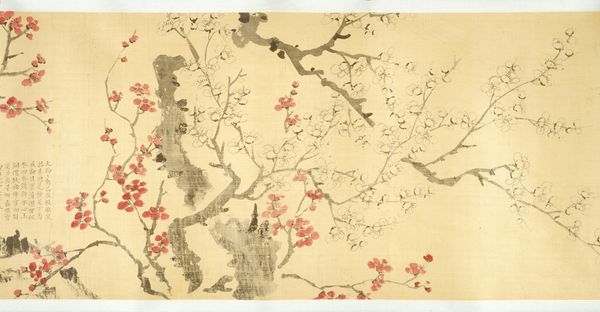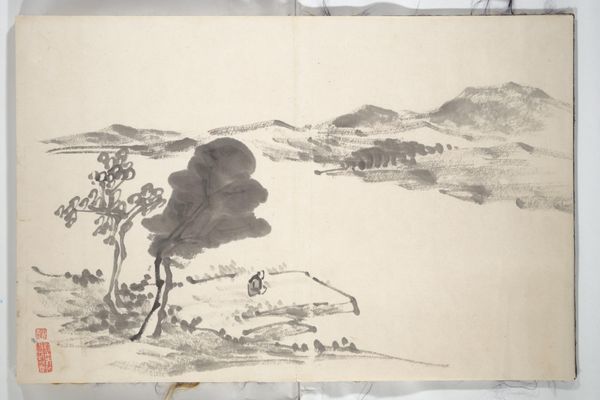
Copyright: Public Domain
Editor: So, here we have Eugène Cicéri’s "Design for a Stage Set," a watercolor and ink drawing dating from sometime between 1830 and 1890. I’m really drawn to its wispy, almost dreamlike quality. What catches your eye? Curator: Oh, it's that ethereal quality that gets me too. It feels like peering into a memory, doesn't it? A half-forgotten stage, or a dream of a forest. Notice how Cicéri uses the watercolor, almost like washes of feeling, more than precise representation. He isn’t giving us detail; he's offering atmosphere. Do you see how the light seems to emanate from nowhere and everywhere all at once? Editor: Yes! And it feels very much of the Romanticism era. Were stage designs typically considered "art" then, like paintings or sculptures? Curator: Ah, a delicious question! Well, the line was blurrier than we often imagine it now. Think about it – theater was such a powerful force then, a central communal experience. Designers like Cicéri weren’t just decorators; they were crafting worlds, emotions, shaping the audience’s experience on a grand scale. These drawings weren't mere blueprints; they held the seed of the spectacle. Editor: So much more than just a backdrop then. It's really opened my eyes to think about the artistic intention that goes into these! Curator: Exactly! The stage is a canvas, and light, shadow, perspective—all are brushstrokes in the story. Editor: I will remember that: "The stage is a canvas." Thanks so much.
Comments
No comments
Be the first to comment and join the conversation on the ultimate creative platform.
